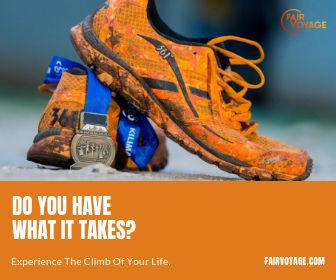I had bought the RAVPower 15W Solar Charger with Dual USB Port
for climbing Kilimanjaro. This because I was taking notes for my book on my phone and needed to be able to charge my phone to do so. RAVPower seemed to be the most recommended panels on Amazon and various online comparison websites.
Indeed, they worked perfectly, and turned out to be sturdy and long-lasting. Two years after climbing Kilimanjaro, in 2016, I cycled for four months from Cairo to Cape Town, all the way through Africa. You can read all about it on Alex Cycles Africa as I was maintaining a daily blog. During my cycling trip, I used my RAVPower solar charger almost every day to charge my phone, e-book reader, GoPro battery, Garmin sports watch, headlamp and small external battery. The panels worked perfectly for such small devices, and kept up well throughout extreme climates.
Within one hour of direct sunlight, you easily get your small devices charged up close to 100% using the RAVPower 15W Solar Panels.
Please note, however, that it takes much longer to charge a tablet or larger external battery pack. Furthermore, solar panels are not suitable to charge a laptop computer. I had done significant research on this, spoken to Apple/Mac support, and bought the most powerful solar charger that was available in the market. Conclusion: Mission Impossible! The voltage is simply not strong enough to charge more powerful devices.
For smaller devices, however, I can highly recommend the RAVPower solar chargers and would buy one again.
Alternatively, you could also invest in a strong external battery pack. I didn’t use it on Kilimanjaro, but bought the RAVPower 26800mAh Portable Charger for my cycling trip. It worked perfectly, especially when I needed to charge my devices early morning before the sun had come up. In hindsight, it is also more practical. While you won’t use solar panels in your daily life, a battery pack is always useful when you’re out and about and your phone or other devices are running low. It might be a better investment for you overall.
Caution: My portable charger kept up well while cycling through Africa. However, while we did have very cold nights, temperatures never dropped below freezing. Batteries drain quickly in cold temperatures. If you use them on Kilimanjaro, makes sure to keep them in your sleeping bag with you over night to avoid drainage. I haven’t tested how well a battery pack would keep up on Kilimanjaro. In the unfortunate event that it drains completely, and if you absolutely must charge your devices while climbing Kilimanjaro, you will most likely be able to borrow a USB outlet from a fellow climber as solar chargers have meanwhile become very popular amongst Kilimanjaro climbers.
So, in a nutshell, think not only about the best solar charger, but whether you need one at all. An external battery pack might be a more useful investment for you.








Leave a Reply
You must be logged in to post a comment.